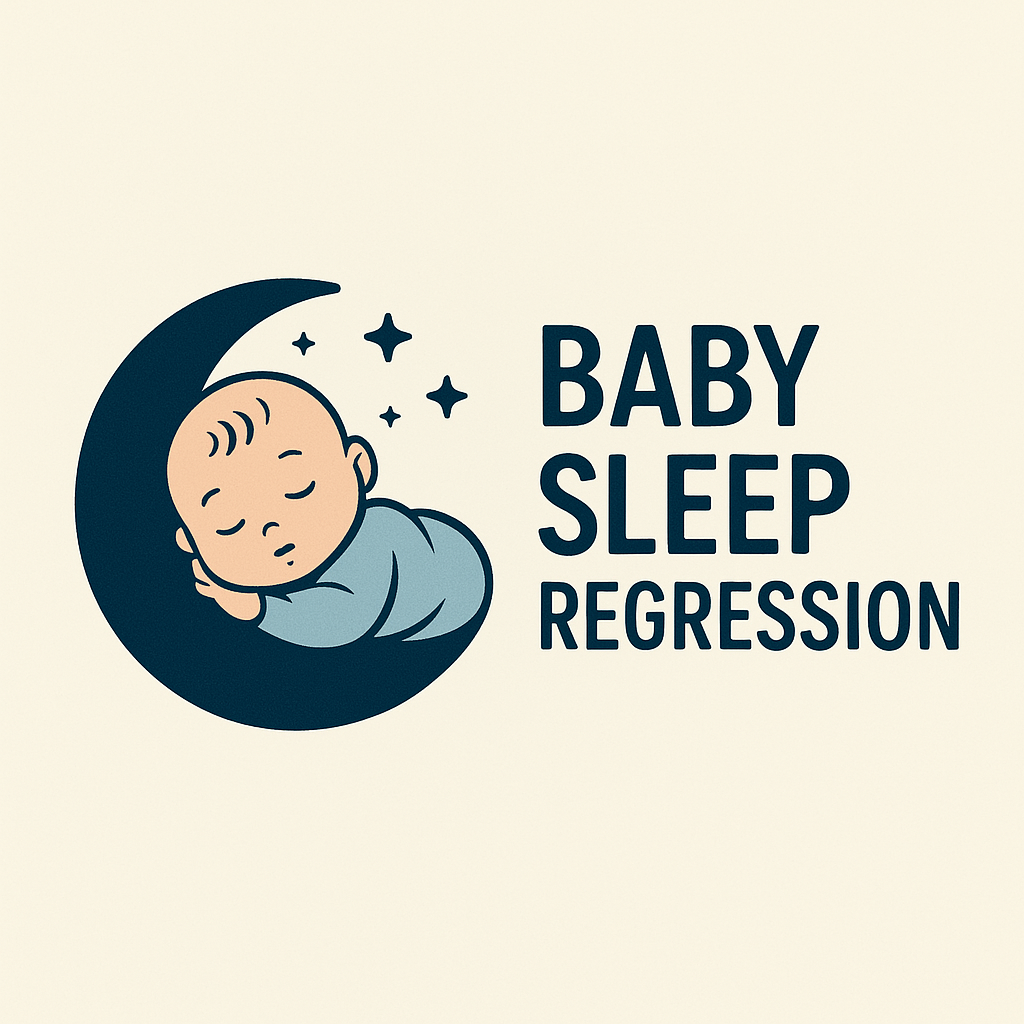How to Handle the 3-Year Sleep Regression in Toddlers

The 3-year sleep regression is a challenging phase when your toddler’s sleep patterns shift unexpectedly. This can lead to bedtime battles, nighttime awakenings, or shorter naps. While it may feel overwhelming, the 3-year sleep regression is a normal developmental stage and won’t last forever.
During this period, many toddlers struggle with falling asleep or staying asleep. Studies indicate that 34.5% of toddlers experience sleep difficulties, and certain groups, such as children with Autism Spectrum Disorder (ASD), may face even greater challenges. These sleep disruptions can impact your child’s mood and behavior, making it essential to address them early.
Understanding the causes and signs of the 3-year sleep regression can help you find effective strategies to improve your child’s sleep. Maintaining consistency, practicing patience, and offering emotional support to your toddler are crucial steps to navigate this stage successfully.
Key Takeaways
The 3-year sleep regression is common and lasts 2-6 weeks.
Knowing the reasons, like growth and emotions, helps parents handle it.
Keeping a regular sleep schedule teaches toddlers when to sleep and wake.
A relaxing bedtime routine with quiet tasks shows it's time to rest.
Helping with fears or worries can make falling asleep easier for toddlers.
Cutting screen time before bed improves sleep by reducing blue light effects.
Playing and being active during the day helps toddlers sleep better at night.
If sleep troubles continue or affect mood, talk to a doctor for help.
Causes of the 3-Year Sleep Regression
Knowing why the 3-year sleep regression happens can help you solve sleep problems. This stage is often caused by growth, feelings, and surroundings.
Developmental Milestones
At three years old, kids grow and learn quickly. This growth can mess up sleep as their brain works on new skills. For example:
Kids may learn to tiptoe, stand on one foot, skip, or pedal a tricycle.
Practicing these moves during the day can make them wake up more at night.
Mental growth also matters. Your child might start imagining things, which can cause fears or trouble calming down. Studies show that growing skills often lead to sleep problems as kids adjust to changes.
Emotional and Social Changes
Feelings and social growth can also affect sleep at this age. Three-year-olds start to understand emotions and relationships better. This can make them more sensitive, which might make falling or staying asleep harder.
Research shows sleep and emotions are connected. For example:
Study | Findings |
|---|---|
Mindell et al. (2017) | Bad sleep linked to emotional struggles in toddlers. |
Berger et al. (2012) | Less sleep makes kids react more strongly to bad things. |
Smith et al. (2020) | Poor sleep hurts emotional growth in toddlers aged 12-36 months. |
Big changes, like starting preschool or meeting new friends, can also cause sleep problems. These new events might make your child feel too excited or worried to sleep well.
Environmental Factors
Things around your child can also affect sleep during this time. Changes like moving houses or switching from a crib to a bed can make them feel less safe. Noise, light, or room temperature can also make sleeping harder.
One study found that kids living with extended family or sleeping outside beds had more sleep issues. Irregular sleep routines were also linked to mental health problems in 3-4 year olds. This shows how important a steady sleep setup is.
By figuring out these growth, emotional, and environmental causes, you can help your child through this tough time and improve their sleep.
Recognizing Signs of Toddler Sleep Regression

Knowing the signs of sleep regression helps you manage sleep issues. Below are the main signs to look out for during this stage.
Struggling with Bedtime
Refusing bedtime is a common sign of sleep regression. Your toddler might resist going to bed or delay bedtime with many requests. This often happens when their natural sleep time doesn’t match the bedtime you’ve set. Studies show putting kids to bed too early can cause more resistance and trouble settling.
Other reasons for bedtime struggles include potty training, moving out of a crib, or separation anxiety. These changes can make your child feel uneasy, leading to behaviors like leaving their bed or refusing to stay in their room.
Here’s a summary of bedtime struggles linked to sleep regression:
Sleep Regression Signs | Bedtime Struggles |
|---|---|
Resisting naps and bedtime | Moving out of a crib |
Delaying bedtime | Feeling anxious when apart |
Waking up too early | Potty training |
Waking Up at Night
Night wakings often increase during sleep regression. Your toddler might wake up crying or need help falling back asleep. This happens more if they depend on things like rocking, holding, or feeding to sleep.
Research shows toddlers who fall asleep alone wake up less at night. For instance, 67.1% of toddlers needing parents to fall asleep wake more often, compared to 13.6% of those who sleep independently.
Signs of night wakings include:
Crying multiple times during the night
Waking up more often than usual
Night wakings returning after a period of good sleep
Nap Changes
Sleep regression can also affect naps. Your toddler might skip naps or take longer ones, which can delay bedtime. Studies show longer naps reduce nighttime sleep, and late naps push bedtime later.
Key nap trends include:
Longer naps mean less nighttime sleep (r = -0.31, p = 0.028).
Late naps delay bedtime (r = 0.52, p = 0.000).
Nap length and timing are connected (r = 0.36, p = 0.011).
If naps are affecting nighttime sleep, adjust the nap schedule to keep a good balance.
Managing the 3-Year Sleep Regression

Consistent Sleep Schedule
Keeping a steady sleep schedule helps with sleep regression. Toddlers do better when their days are predictable. A regular bedtime and wake-up time teach their bodies when to sleep and wake. Following the same routine daily helps their internal clock stay on track.
Studies show how helpful a consistent schedule can be:
Bedtime routines at 12 months lower behavior problems by 15 months.
At 15 months, regular bedtimes reduce emotional struggles by 24 months.
A study of 2,977 kids found better emotional control at 36 months with steady routines.
To set a schedule, pick a fixed bedtime and wake-up time. Stick to it every day, even on weekends. Don’t let your toddler stay up late or sleep in, as this can confuse their sleep rhythm. Over time, this routine will make sleep easier and help with regression challenges.
Calming Bedtime Routine
A peaceful bedtime routine helps your child relax before sleep. Include quiet activities like reading, singing, or a warm bath. These calming actions signal that it’s time to rest and make your toddler feel safe.
Research shows bedtime routines lasting 20–45 minutes reduce sleep troubles. Start the routine at the same time each night and follow the same steps. This predictability helps your child’s mind and body prepare for sleep.
Avoid exciting activities like screen time or rough play before bed. These can make it harder for your toddler to calm down. Instead, dim the lights, lower noise, and keep their room cozy and distraction-free. These small changes can improve sleep during regression.
Addressing Emotional Needs
Emotions often affect sleep regression. Toddlers may feel scared, anxious, or have bad dreams that disturb their sleep. Helping them feel safe is key to better sleep.
Spend time comforting your child before bed. Talk about their day or any worries they have. Teach relaxation techniques like deep breathing or imagining calm places, like a beach or garden. These can ease anxiety and help them settle.
If your toddler is scared, use a nightlight or leave the door open a little. These small actions can make them feel secure. By meeting their emotional needs, you improve their sleep and strengthen your connection with them.
Additional Tips for Better Sleep
Limit Screen Time
Cutting down on screen time before bed helps toddlers sleep better. Devices like tablets and TVs give off blue light. This light stops melatonin, a hormone that helps with sleep. Research shows skipping screens before bed improves sleep and reduces night wakings.
Key Findings | Description |
|---|---|
No screens before bed improved toddlers' sleep efficiency. | |
Fewer Night Wakings | Toddlers woke up less often without screen time before bed. |
First RCT Evidence | A study proved limiting screens helps toddlers sleep better. |
Set a rule: no screens at least one hour before bed. Instead, try quiet activities like reading or drawing to relax. This change can make bedtime easier and improve sleep routines.
Encourage Physical Activity
Being active during the day helps toddlers sleep longer and deeper. Active kids fall asleep faster and wake up less. Studies show more activity leads to better sleep. For every 1% more activity, sleep improves by 0.37%.
Here are fun ways to keep your toddler moving:
Play outdoor games like tag or hide-and-seek.
Try dancing or jumping games indoors.
Go for walks or visit a park for fresh air.
Aim for at least 30 minutes of activity daily. Sunlight during the day also helps set a healthy sleep schedule.
Monitor Diet and Nutrition
What your toddler eats affects how well they sleep. Some nutrients help the body relax and make melatonin for sleep. Foods with tryptophan, omega-3s, calcium, and magnesium are great for sleep.
Tryptophan: Found in nuts, seeds, and grains, it helps make melatonin.
Omega-3s: Found in fish and flaxseeds, they support brain and sleep health.
Calcium: Helps control sleep cycles; low levels can cause sleep issues.
Magnesium: Calms the body and improves sleep quality.
Study Focus | Findings |
|---|---|
Fruits and Vegetables | Eating kiwis and cherries improved sleep in studies. |
Caloric Restriction | More fruits and veggies linked to better sleep. |
Nutrient Intake | High fiber and vitamins improved sleep quality. |
Add foods like bananas, yogurt, and leafy greens to meals. Avoid sugary snacks and caffeine, especially at night, as they can make falling asleep harder.
When to Seek Professional Help
Ongoing Sleep Problems
Sometimes, sleep troubles last longer than usual. If your toddler keeps having sleep issues even with routines and strategies, it’s time to get help. Frequent night wakings or trouble falling asleep can affect your child’s health and happiness.
Experts say childhood insomnias affect 10% to 30% of kids. These often involve habits like needing rocking to sleep or irregular bedtimes. Doctors diagnose these problems when sleep troubles happen three times a week for three months or more.
Sleep disorder (prevalence) | Key features | Diagnosis rules | Treatment options |
|---|---|---|---|
Childhood insomnias (10%-30%) | Needs rocking to sleep; irregular bedtime routines | Sleep issues at least 3 times weekly for 3+ months | Behavior changes; avoid sleep medications |
If your toddler shows these signs, talk to a doctor or sleep expert. They can check your child’s sleep habits and suggest solutions. Acting early can stop bigger sleep problems and improve your child’s well-being.
Effects on Toddler’s Health
Good sleep is important for your toddler’s growth and emotions. Long-lasting sleep problems can cause mood swings, bad behavior, or slow development. You might notice your child gets cranky, has trouble focusing, or misses milestones.
Studies show poor sleep affects emotions. Kids who don’t sleep well may have tantrums or feel extra sensitive. Over time, this can hurt their friendships and ability to handle new situations.
If sleep problems start to harm your child’s daily life or happiness, it’s time to ask for help. A doctor can find out if anxiety or health issues are causing the sleep troubles. Fixing these early gives your child the support they need to grow and succeed.
Tip: Follow your gut as a parent. If you think your child’s sleep issues are serious, don’t wait to seek help.
Handling the 3-year sleep regression takes care and planning. You can help your toddler by being consistent, patient, and understanding their feelings.
Set a daily routine with regular play, naps, and bedtime. This helps your child’s body know when to rest.
Stay calm if bedtime becomes difficult. Patience helps you handle challenges without making things worse.
Encourage outdoor play, serve healthy foods, and adjust bedtime if needed to keep a good sleep routine.
Studies show that emotional health matters during sleep regression. Sleep problems can lead to mental health issues, so it’s important to focus on family relationships and feelings to improve sleep.
If sleep troubles continue or affect your child’s mood and growth, talk to a doctor. Getting help early ensures your toddler gets the care they need to do well.
FAQ
What is the 3-year sleep regression?
The 3-year sleep regression is when your child’s sleep changes. It includes bedtime struggles, waking at night, or skipping naps. This happens due to growth and emotional changes.
How long does the 3-year sleep regression last?
It usually lasts 2-6 weeks. The length depends on how fast your toddler adapts. Using routines and strategies can make it shorter.
Should I change my toddler’s bedtime during sleep regression?
Don’t make big changes to bedtime. Keep a steady schedule but adjust slightly if needed. For example, move bedtime by 15-30 minutes if naps are longer.
How can I help my toddler fall asleep faster?
Use a relaxing bedtime routine with quiet activities like reading or bathing. Avoid screens or exciting play before bed. A routine helps your child know it’s time to sleep.
Is it normal for my toddler to wake up crying at night?
Yes, waking up at night is common during this phase. Your toddler might need comfort or help to sleep again. Teach them to calm themselves over time for better habits.
Can diet affect my toddler’s sleep?
Yes, food can impact sleep quality. Foods with tryptophan, magnesium, and calcium help sleep. Avoid sugary snacks and caffeine, especially at night.
When should I seek professional help for sleep issues?
If sleep problems last over six weeks or affect your child’s mood or growth, talk to a doctor or sleep expert. Early help can stop bigger problems.
How do I know if my toddler’s sleep regression is over?
You’ll see fewer bedtime fights, less waking at night, and normal naps again. Sticking to routines helps your child move past this stage easily.
See Also
Tips for Improving Sleep in Your 3 Year Old
Navigating 3-Month Sleep Regression: Essential Tips for Parents
Easing the Challenges of 9 Month Sleep Regression

